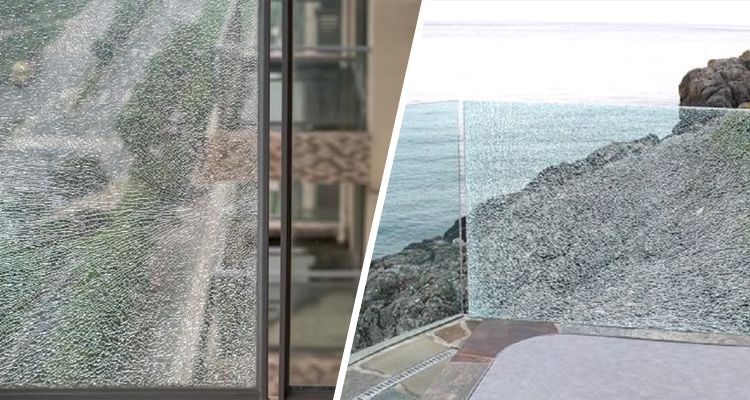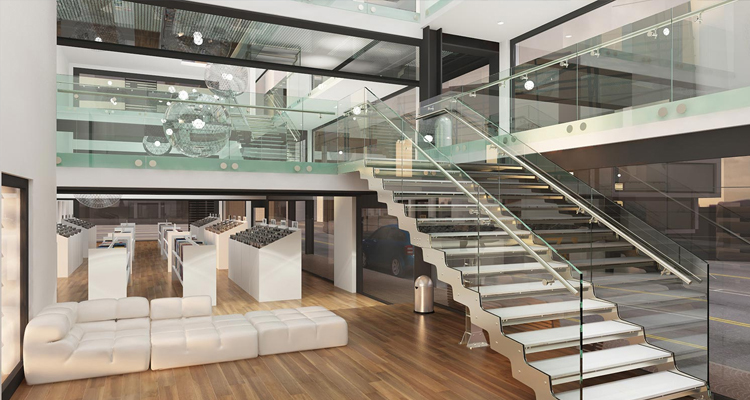Whether it is your exterior porch, balcony, or the interiors, having outdoor or indoor glass railing systems can give a bold style statement to the décor. It has been a ground-breaking concept in interior designing to use glass as a key component in railing systems. Glass is a material that provides both safety and beauty to a structure, and this type of railing systems are used for both residential and commercial areas. Its flexible appearance makes it the perfect choice for traditional as well as modern style settings.
However, other than the glass railing designs, there is some variety in materials too when it comes to choosing glass panels.

Type of Glass for Glass Balcony Railing
There are two choices when it comes to safety glass: tempered or laminated. Since wired glass has lost its safety as safety glass, these two are the only qualified “safety glazing materials” there are. Each of these materials has its own pros and cons.
Traditional wired glass was considered a safety glass for different applications. This particular material, embedded with a mesh of steel, may have been useful for applying in skylights and elevators decades ago. But in the recent update of the National Standard of Canada, applied by the Canadian General Standards Board (CGSB), the status of safety glass has been withdrawn from the traditional wired glass. In fact, since 2015, the International Building Code (IBC) has specified the use of laminated, tempered or heat-strengthened glass for glass railings.
More popularly known as “invisible railings”, these type of glass railings have clear panels that work as an invisible picture frame to the outside scenery. That means you can simply sit back and enjoy the outdoor view of your balcony without any obstruction. It’s an excellent choice for people with small kids and pets on the premises, since there little space between the railing panels.
Manufacturing
A tempered glass railing is made from a number of panels that have undergone a heating and cooling process inside a tempering furnace. In this method, the glass is pre-cut and edged prior to being put inside the furnace. Afterwards, it is heated at around 1200°F and then cooled down rapidly. This type of cooling method is known as quenching, that leaves the glass hardened and at least 4 to 5 times stronger than it was before the tempering process.
Breaking

This also makes the glass panels more durable against breaking and shattering. If they do break, the shattered pieces are rather large chunks than sharp-edged, reducing the chances of injury from them.
Additional Info: With EVA or ethylene-vinyl acetate laminated glass, the cracking pattern resembles the structure of a spider web, which prevents the glass from breaking upon impact.
Structure
According to IBC, a tempered glass panel should be at least 6 mm or ¼” thick and should be able to handle load requirements. Overall, a standard tempered glass panel should have 5/16” powder coated or stainless rail posts, and consist of 10mm thick, shatterproof panels. The steel clamp post of the glass railing should be preferably corrosion-resistant, rubber-coated stainless steel.
Structure
Laminated glass, in contrast, is a “glass sandwich”, that has a vinyl interlayer placed between two or more piles of glass, like in the windshield of a car. The adhesion of various interlayers is the primary reason behind the edge stability of the material. This way, the glass stays together if it gets damaged. Therefore, it is considered by a safety glazing material too.
Types
Depending on the interlayers, laminated glass can be of three types:
Use
Laminated glass is best prescribed if you prefer glass panels that are frameless. Generally, PVB is more suitable for the indoor glass stair railings because it has a chance of decaying quicker than EVA, which is more preferable for outdoor railings. Also, EVA gives a clearer lamination than PVB.

Tempered Glass
Laminated Glass
Tempered Glass
Laminated Glass
Simply stated, if you want a strong and break-resistant glass railing, then choose tempered glass over anything else. Whereas, if you want flexibility, UV-resistance, and sound blocking, then laminated glass is the perfect choice. When looking for outdoor or indoor glass railings in Toronto, decide your criteria to find a product that will give you satisfactory service for years to come.